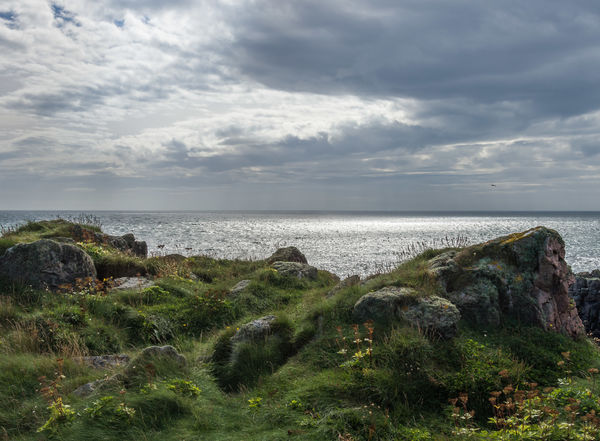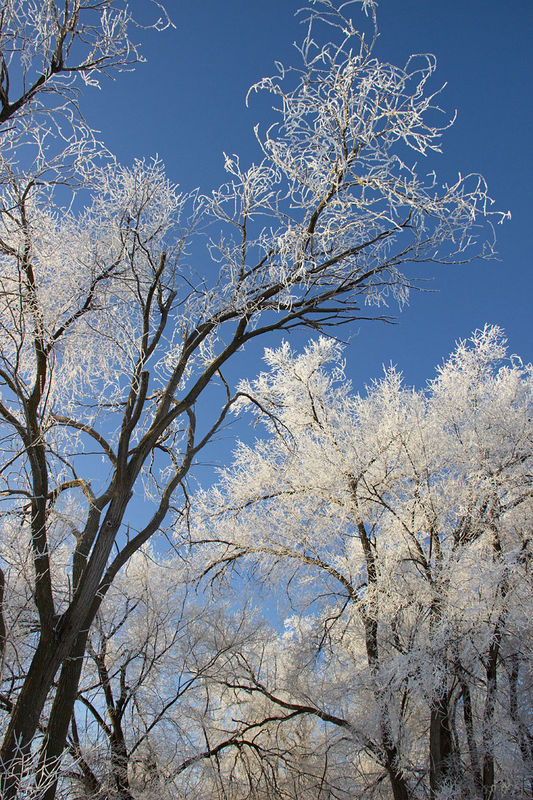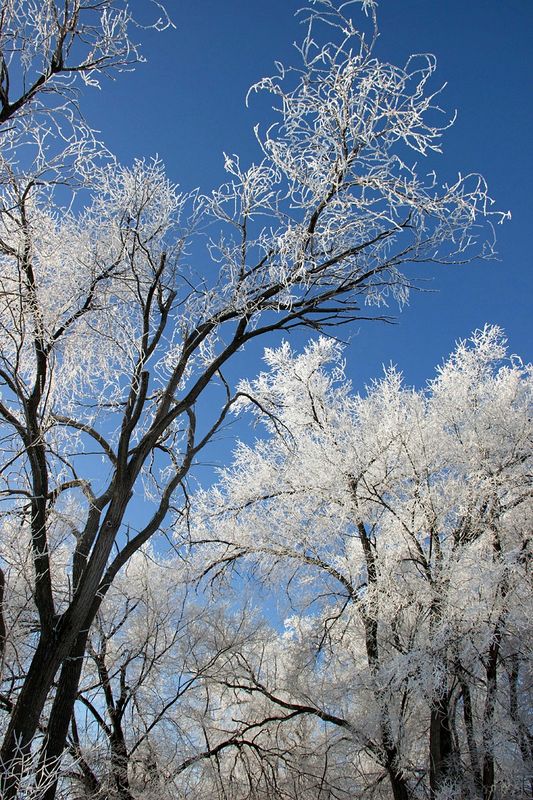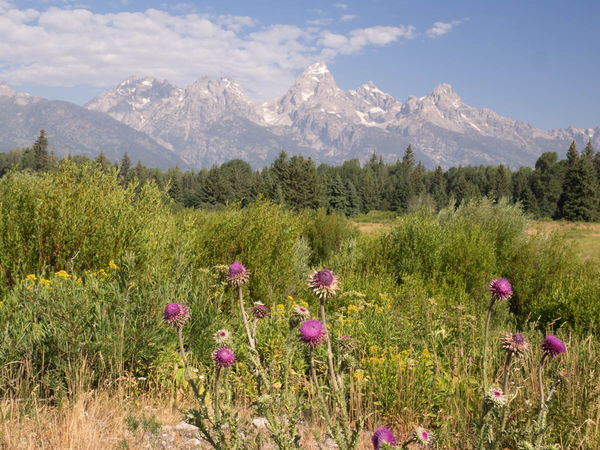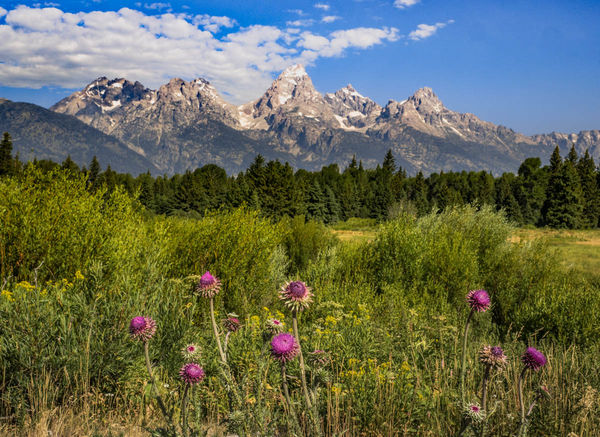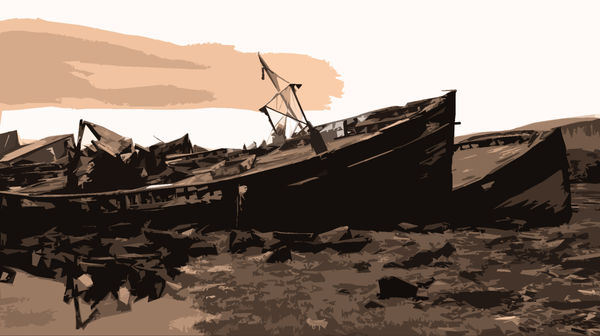Normalisation.
Jan 19, 2017 13:18:52 #
Further to exchanges elsewhere I've started a thread where I can gather a few thoughts on the pros, cons, appropriateness and inappropriateness of normalisation.
I'm not using the term "normalisation" as meaning "rendering a shot as completely normal (natural) as possible" - there are always degrees. More realistically, normalisation typically consists of a few nudges in the direction of making a shot look less strange, less artificial, less contrived - in other words reducing (not necessarily negating) whatever the departure from normality was.
For anybody with extremist views such as thinking that 'straight out of camera' (SOOC) is the only way to go, I would like to remind you that the main purpose of white balance (WB) adjustments has been to normalise shots, and we've been using them for quite some time now. If there wasn't a need to normalise, we wouldn't have WB or Tint sliders in all of our post processing (PP) editors.
At the other end of the extremist scale is the idea that we should apply normalisation universally and to the point where images are as normalised as they can be. Going to that extreme would eliminate the much-needed exceptions to the norm. Very often it's what was unusual about a scene or object that motivated us to shoot it in the first place.
It was mentioned elsewhere that our brains are constantly processing what we see. One aspect of that is that our brains will remove or reduce colouration caused by the ambient light. That's one of the reasons why people are so often surprised and disappointed that their shots have come out too blue (or yellow or pink or whatever). One implication of these facts is that being a first-hand observer of a scene doesn't guarantee that our memories are an accurate indicator of what the reality of the scene was. Our memories can lie to us whereas our camera sensors will faithfully record our captures (depending on the camera settings used). The software is designed to provide suitable WB settings, but software doesn't always know what's appropriate and we get snow that's too blue etc etc.
Another aspect of our eye/brain combo is that our ability to see details in shadows (and to a lesser extent glare) is enhanced. I've long been a proponent of using moderate HDR processing to bring a capture closer to what our perceptions were. In this context, the effect that HDR processing has would be classified as normalisation, despite the fact that it means artificially altering the luminosity gradient (i.e. messing with the light levels).
I invite you to agree/disagree with, comment on, expand on any of the above. I'm hoping that there will be images posted as examples of points being made.
I'll post an image of my own which was an attempt to capture some very unusual lighting that I came across while out shooting. I could have tried to turn the shot into one of a normal scene, but it was its unusualness that motivated me to try to capture it in the first place. The content on its own (grass, rocks, flowers, sea) wouldn't have motivated me to take the shot.
-
I'm not using the term "normalisation" as meaning "rendering a shot as completely normal (natural) as possible" - there are always degrees. More realistically, normalisation typically consists of a few nudges in the direction of making a shot look less strange, less artificial, less contrived - in other words reducing (not necessarily negating) whatever the departure from normality was.
For anybody with extremist views such as thinking that 'straight out of camera' (SOOC) is the only way to go, I would like to remind you that the main purpose of white balance (WB) adjustments has been to normalise shots, and we've been using them for quite some time now. If there wasn't a need to normalise, we wouldn't have WB or Tint sliders in all of our post processing (PP) editors.
At the other end of the extremist scale is the idea that we should apply normalisation universally and to the point where images are as normalised as they can be. Going to that extreme would eliminate the much-needed exceptions to the norm. Very often it's what was unusual about a scene or object that motivated us to shoot it in the first place.
It was mentioned elsewhere that our brains are constantly processing what we see. One aspect of that is that our brains will remove or reduce colouration caused by the ambient light. That's one of the reasons why people are so often surprised and disappointed that their shots have come out too blue (or yellow or pink or whatever). One implication of these facts is that being a first-hand observer of a scene doesn't guarantee that our memories are an accurate indicator of what the reality of the scene was. Our memories can lie to us whereas our camera sensors will faithfully record our captures (depending on the camera settings used). The software is designed to provide suitable WB settings, but software doesn't always know what's appropriate and we get snow that's too blue etc etc.
Another aspect of our eye/brain combo is that our ability to see details in shadows (and to a lesser extent glare) is enhanced. I've long been a proponent of using moderate HDR processing to bring a capture closer to what our perceptions were. In this context, the effect that HDR processing has would be classified as normalisation, despite the fact that it means artificially altering the luminosity gradient (i.e. messing with the light levels).
I invite you to agree/disagree with, comment on, expand on any of the above. I'm hoping that there will be images posted as examples of points being made.
I'll post an image of my own which was an attempt to capture some very unusual lighting that I came across while out shooting. I could have tried to turn the shot into one of a normal scene, but it was its unusualness that motivated me to try to capture it in the first place. The content on its own (grass, rocks, flowers, sea) wouldn't have motivated me to take the shot.
-
Jan 19, 2017 13:49:13 #
Thank you for posting another thought-provoking topic, R.G.
I think your image is breathtaking! Please talk about what you feel would make it appear more normal. I have witnessed many times when the sun was shining brightly on just a small area of landscape, so my brain accepts the somewhat bright green foreground as totally plausible. Similar with the sparkling water and darker, lower cloud on the right.
We've touched before on how experiences and where we live play a large part in our willingness to accept an image as normal, so I imagine there will be a lot of references to that in this topic.
I think your image is breathtaking! Please talk about what you feel would make it appear more normal. I have witnessed many times when the sun was shining brightly on just a small area of landscape, so my brain accepts the somewhat bright green foreground as totally plausible. Similar with the sparkling water and darker, lower cloud on the right.
We've touched before on how experiences and where we live play a large part in our willingness to accept an image as normal, so I imagine there will be a lot of references to that in this topic.
Jan 19, 2017 13:51:06 #
I rarely feel the need to normalize a shot - lol - so I don't have many examples, but here's a recent.
#1 reflects the yellow light of the early morning (sun shining directly onto the trees), #2 is adjusted to seem more natural for the subject.
#1 reflects the yellow light of the early morning (sun shining directly onto the trees), #2 is adjusted to seem more natural for the subject.
Jan 19, 2017 14:02:38 #
Linda From Maine wrote:
......Please talk about what you feel would make it appear more normal......
A bit less glare, a WB shift towards yellow, easing off on the saturation. I posted an edit of one of minniev's shots of Iceland and while editing it I remember deliberately avoiding reducing the highlights and avoiding strengthening the blues because I knew that the unusual lighting that she referred to would have been lost. In my shot it's mainly the light on the sea that looked slightly other-worldly. The grass just looks a bit more vivid than I would normally go for, possibly due to the greens being more blue/green than yellow/green.
Your trees don't look wrong with the original yellow light, but the edited shot does have a cleaner look. My take on PP is that it can be used to nudge a shot closer to what it would have been under ideal shooting conditions. I don't feel any binding commitment to reproducing reality.
Jan 19, 2017 14:37:09 #
R.G. wrote:
Where my own vision fails sometimes is not taking the unreality far enough. So it ends up looking more like a mistake than a fanciful interpretation (e.g. fine art, except I'm not anywhere near that league!). ...I don't feel any binding commitment to reproducing reality.
.
Jan 19, 2017 14:47:38 #
Linda From Maine wrote:
Where my own vision fails sometimes is not taking the unreality far enough. So it ends up looking more like a mistake than a fanciful interpretation (e.g. fine art, except I'm not anywhere near that league!).
I think it comes down to the same thing - being able to visualise an ideal. The visualisation can be surreal or just plain real.
Jan 19, 2017 18:29:38 #
Another very interesting thread, RG.
I admit to having some challenges with the concept because I am very attracted to natural lighting that is outside the norm and I want to hang on to the odd effects it induces rather than normalize them. There are times when I actually enhance it to make more of it, though that is mostly with contrast tools rather than color balance or toning tools. The exceptions would usually be the yellow/greens in foliage which I know from experience and study can fool my camera. I love the cool blues of predawn and the yellows of a backlit fog for those few moments right after sunrise, so if I mitigate them I do it with a light hand. I am no advocate of SOOC or of anything else, except doing what we want with our own images and what I want is different from one image (or one day ) to another. My mitigation choices are as variable as everything else I do.
) to another. My mitigation choices are as variable as everything else I do.
Of course I have numerous examples. The first I'll post is an interesting dilemma I faced in Grand Teton last summer, where the air was both colored and clouded by the chemicals used in fighting the forest fires and of course the smoke too. So I found myself mitigating what I saw with what I had seen on other trips there when there were no fires and no chemicals.
I admit to having some challenges with the concept because I am very attracted to natural lighting that is outside the norm and I want to hang on to the odd effects it induces rather than normalize them. There are times when I actually enhance it to make more of it, though that is mostly with contrast tools rather than color balance or toning tools. The exceptions would usually be the yellow/greens in foliage which I know from experience and study can fool my camera. I love the cool blues of predawn and the yellows of a backlit fog for those few moments right after sunrise, so if I mitigate them I do it with a light hand. I am no advocate of SOOC or of anything else, except doing what we want with our own images and what I want is different from one image (or one day
 ) to another. My mitigation choices are as variable as everything else I do.
) to another. My mitigation choices are as variable as everything else I do.Of course I have numerous examples. The first I'll post is an interesting dilemma I faced in Grand Teton last summer, where the air was both colored and clouded by the chemicals used in fighting the forest fires and of course the smoke too. So I found myself mitigating what I saw with what I had seen on other trips there when there were no fires and no chemicals.
Jan 20, 2017 08:27:21 #
I think that, with the ability to post-process, we have lots of choices with what to do with photography today. Art, to me, is about the emotion its depiction elicits from, for example, a viewer. What is the subject of a photo and how can we try to elicit from the viewer the emotion that the artist feels?
When Graham posted a derelict boat (my interpretation) on shore and invited us to enhance it, I chose, as you can see, an extreme method. I zoomed in to emphasize that the boat was a wreck, with its bent mast highlighted and unrecognizable "stuff" strewn about. The color palette asked viewers to join in the mourning of what once was, like a great whale dying on shore.
Whether or not this interpretation was Graham's or others', I do not know. It was mine, and I tried my best, using the kernel of Graham's photo as a basis, to convey what I wanted the viewer to feel. Sometimes we can do that with "normalization." With my limited skills, I found a way that I thought was satisfactory.
When Graham posted a derelict boat (my interpretation) on shore and invited us to enhance it, I chose, as you can see, an extreme method. I zoomed in to emphasize that the boat was a wreck, with its bent mast highlighted and unrecognizable "stuff" strewn about. The color palette asked viewers to join in the mourning of what once was, like a great whale dying on shore.
Whether or not this interpretation was Graham's or others', I do not know. It was mine, and I tried my best, using the kernel of Graham's photo as a basis, to convey what I wanted the viewer to feel. Sometimes we can do that with "normalization." With my limited skills, I found a way that I thought was satisfactory.
Jan 20, 2017 09:04:24 #
Normalizing snow: I didn't want to over-expose to keep the white, and then have to deal with making the red more vibrant, nor did I want the background to be any lighter. Instead, in pp I did selective lightening of just the snow bonnets (Cwilson341 coined that phrase  ). I think I captured the pristine, crisp beauty that my eye saw at the scene.
). I think I captured the pristine, crisp beauty that my eye saw at the scene.
(edit - to clarify, after reading Edie's comments below, I was thinking of crisp more as cold, fresh and new, kind of just repeating "pristine." Thank you for your observation, Edie!)
 ). I think I captured the pristine, crisp beauty that my eye saw at the scene.
). I think I captured the pristine, crisp beauty that my eye saw at the scene.(edit - to clarify, after reading Edie's comments below, I was thinking of crisp more as cold, fresh and new, kind of just repeating "pristine." Thank you for your observation, Edie!)
Jan 20, 2017 09:09:44 #
Linda From Maine wrote:
Normalizing snow: I didn't want to over-expose to keep the white, and then have to deal with making the red more vibrant, nor did I want the background to be any lighter. Instead, in pp I did selective lightening of just the snow bonnets (Cwilson341 coined that phrase  ). I think I captured the pristine, crisp beauty that my eye saw at the scene.
). I think I captured the pristine, crisp beauty that my eye saw at the scene.
 ). I think I captured the pristine, crisp beauty that my eye saw at the scene.
). I think I captured the pristine, crisp beauty that my eye saw at the scene.Thank you for the description of your goal and what your mind's eye saw. The word in your description that stands out, to me, is "crisp," and my mind's eye doesn't see that. Instead, what I see is nature's lovely design, especially in the center of the photo surrounded by echoes of colors and lines elsewhere.
Jan 20, 2017 10:21:04 #
Linda, this is a very nice photograph featuring color and the exposure captured the texture of the snow, as well as the texture of the lighting, quite nicely. Very good exposure.
--Bob
--Bob
Linda From Maine wrote:
Normalizing snow: I didn't want to over-expose to ... (show quote)
Jan 20, 2017 11:07:59 #
My exposure technique, referring to digital, is such that I have to normalise the RAW image in ACR. Once in PS, I white balance the image.
--Bob
--Bob
R.G. wrote:
Further to exchanges elsewhere I've started a thre... (show quote)
Jan 20, 2017 11:30:25 #
minniev wrote:
.....I am very attracted to natural lighting that is outside the norm and I want to hang on to the odd effects it induces rather than normalize them.......
While I'm not seeing this subject resolve itself into tidy little digestible packets, I am starting to get a clearer idea about what's to be gained - and more importantly what's to be lost - with normalisation. The benefits of normalisation are obvious, but rather than applying it blindly I think it's important to give some thought to what might be lost if normalisation is applied universally as part of our work flow.
In the best possible way I think your posted shots provide us with a good example of what I mean. Your first posted shot obviously needed some sort of normalisation and it looks like you were completely successful in removing the slight colour tint and the haze. However, while I'm glad to see the tint go, my assessment is that you over-did the haze removal - which serves as a reminder that normalisation, like most things, can be overdone. I like your comment about how you typically mitigate oddities rather than remove them completely, and occasionally do the opposite and enhance them. To me that smacks of the right sort of mind set.
Jan 20, 2017 11:41:26 #
ediesaul wrote:
.....Sometimes we can do that with "normalization." With my limited skills, I found a way that I thought was satisfactory.
Thanks for posting, Edie. You've reminded us of a possibility that was being ignored - forget about normalisation completely and go for the emotion/impression payload. I would agree that there's much to be gained artistically from surreal editing, but I hope you're not turning your back on the need to learn how to normalise (I'm sure you have it well under control
 ).
).Jan 20, 2017 11:45:32 #
Linda From Maine wrote:
Normalizing snow: I didn't want to over-expose to keep the white, and then have to deal with making the red more vibrant, nor did I want the background to be any lighter. Instead, in pp I did selective lightening of just the snow bonnets.....
I would say this is a good example of the sort of juggling act that we have to perform sometimes if we want to keep our normalising limited and appropriate. Again I would say it smacks of the right sort of mind set.
If you want to reply, then register here. Registration is free and your account is created instantly, so you can post right away.

